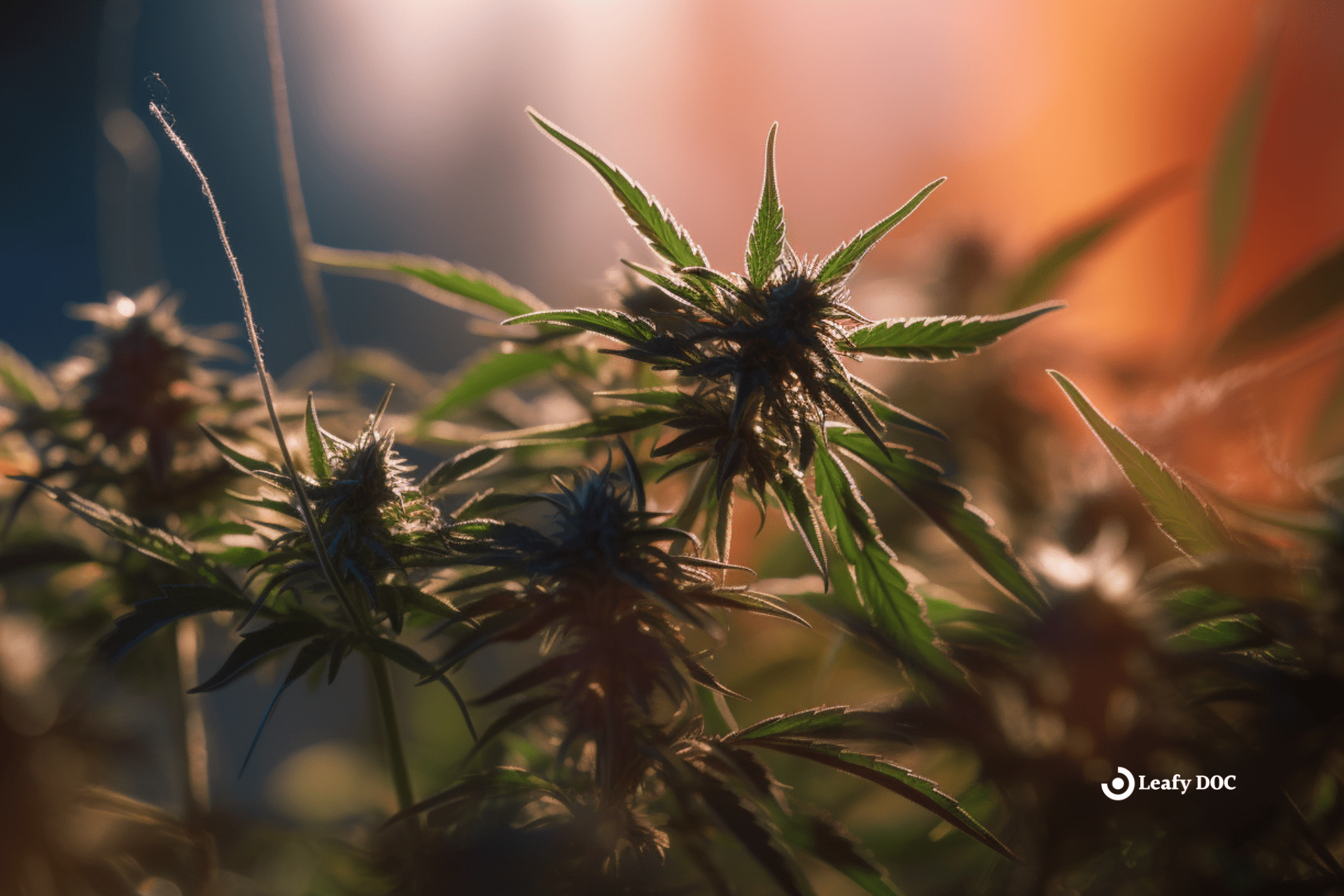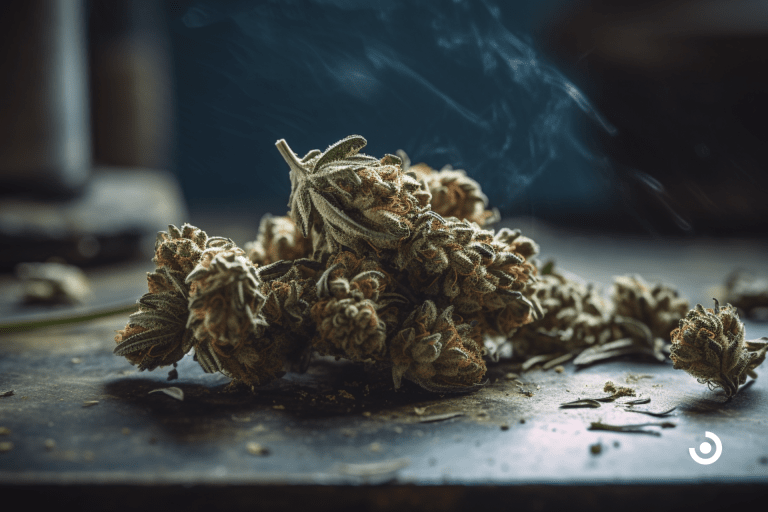Understanding The Genotypes And Phenotypes Of Cannabis
by Haley Mills · October 31, 2023
Discover the hidden world of cannabis genetics! Learn about the difference between genotypes and phenotypes, and unravel the mysteries behind each strain. Click here to unlock the secrets of cannabis now!

Cannabis, also known as marijuana, has been a topic of interest and controversy for many years. As the legalization and medical use of cannabis continues to expand, there is a growing need for a deeper understanding of its genetic makeup and the resulting physical characteristics. This article aims to shed light on the complex relationship between the genotypes and phenotypes of cannabis, as well as the implications for its use and cultivation.
To comprehend the genotypes and phenotypes of cannabis, it is crucial first to understand the different types of cannabis genotypes. Cannabis is classified into three primary genotypes: Cannabis sativa, Cannabis indica, and Cannabis ruderalis.
Understanding these variations is crucial for both cannabis enthusiasts and researchers to select and develop strains with desired phenotypic traits, such as increased potency, specific terpene profiles, or medicinal properties. By exploring the intricate relationship between genotypes and phenotypes, we can better understand cannabis and its potential applications in various fields.
Key Takeaways
- Cannabis is classified into three primary genotypes: Cannabis sativa, Cannabis indica, and Cannabis ruderalis.
- Sativa strains have tall stature, narrow leaves, and uplifting effects, while indica strains are shorter, bushier, and produce a more relaxing and sedating effect.
- Phenotypes can vary within the same genotype due to genetic mutations, environmental factors, and cultivation techniques.
- Understanding genotypes and phenotypes is essential for selecting and developing strains with desired traits.
Types of Cannabis Genotypes
Cannabis cultivars, also known as strains, result from specific breeding techniques used to create unique combinations of genetic traits. These breeding techniques involve selecting parent plants with desired traits and crossbreeding them to create offspring with a combination of those traits.
There are three main types of cannabis genotypes: Sativa, Indica, and Hybrid. Sativa strains are known for their uplifting and energizing effects. They typically have tall, thin plants with narrow leaves. Indica strains, on the other hand, are known for their relaxing and sedating effects. They generally have shorter, bushier plants with broader leaves. Hybrid strains combine Sativa and Indica genetics, resulting in a blend of their respective effects.
The different cannabis genotypes can also have varying levels of cannabinoids, such as THC and CBD. THC is the psychoactive compound responsible for the “high” associated with cannabis, while CBD is known for its potential therapeutic properties. The levels of these cannabinoids can vary greatly between strains, contributing to the different effects experienced by users.
The Relationship Between Genotypes and Phenotypes
A genetic mutation can result in changes in the plant’s physical appearance, such as the color and shape of the leaves, the size and density of the buds, and the overall growth pattern. Genetic variations can also impact the plant’s chemical composition, including the levels of cannabinoids and terpenes, which are responsible for the plant’s therapeutic and aromatic properties.
Environmental factors also play a significant role in shaping the phenotypes of cannabis plants. Environmental factors such as temperature, humidity, light intensity, and nutrient availability can influence the expression of certain traits. For example, a cannabis plant may have the genetic potential to produce high levels of THC, but if grown in a low-light environment, it may not reach its full potential. Similarly, different nutrient ratios can affect the plant’s growth and development, leading to variations in the overall phenotype.
Common Cannabis Phenotypes
Common cannabis phenotypes can often surprise and delight with their diverse range of characteristics. The phenotype of a cannabis plant refers to its observable traits, such as its height, leaf shape, flower color, and aroma. These traits can vary widely depending on the plant’s genotype and the environmental influences it experiences.
Environmental factors, such as temperature, light intensity, and nutrient availability, can significantly impact the expression of a plant’s phenotype. For example, cannabis plants grown in warmer climates may have larger leaves and a taller stature, while those grown in cooler climates may have smaller leaves and a more compact structure. Additionally, the amount and quality of light a plant receives can affect its flowering time and yield. Nutrient deficiencies or imbalances can also lead to stunted growth, discoloration, and other undesirable traits in cannabis plants.
Selective breeding has played a crucial role in shaping the phenotypes of cannabis plants. Breeders carefully choose which plants to crossbreed based on their desired traits, such as potency, yield, and disease resistance. By selecting plants with the desired traits and breeding them together, breeders can create offspring with a higher likelihood of inheriting those traits. Over time, this process can lead to the development of cannabis strains that exhibit specific characteristics consistently.
For example, breeders may selectively breed plants with high THC content to create strains with potent psychoactive effects. Alternatively, they may focus on breeding plants with high CBD content to produce more medicinal strains. Selective breeding allows breeders to create cannabis phenotypes that cater to different preferences and purposes, whether it be recreational or medicinal use.
Genetic Manipulation and Hybridization in Cannabis
Genetic manipulation refers to the deliberate alteration of an organism’s genetic material, while hybridization involves crossbreeding different cannabis strains to create new varieties. These techniques are widely used in the cannabis industry to develop plants with specific traits and characteristics.
Genetic manipulation in cannabis involves techniques such as gene editing and genetic engineering. Gene editing allows scientists to make precise changes to the DNA of a cannabis plant, such as modifying specific genes responsible for certain traits. This can lead to the development of cannabis plants with increased potency, improved disease resistance, or enhanced yield.
Hybridization involves crossbreeding different cannabis strains to create new varieties. This can be done through various methods, including traditional breeding or more advanced techniques such as tissue culture. Hybridization allows breeders to combine desirable traits from different strains, such as high THC content or unique flavors, to create new and exciting cannabis varieties.
Ethical considerations play a crucial role in the genetic manipulation and hybridization in cannabis. Some argue that altering the genetic makeup of cannabis plants is unnatural and goes against the principles of nature. Others say that these techniques can be used to improve the medicinal properties of cannabis and benefit patients. It is essential to carefully consider the potential risks and benefits of genetic manipulation and hybridization in cannabis.
Legal implications also need to be considered regarding genetic manipulation and hybridization in cannabis. The legality of these techniques varies from country to country and even within different states or provinces. Some jurisdictions have strict regulations on genetic modification and may require permits or licenses for certain activities. Researchers and breeders need to understand and comply with the legal requirements in their respective jurisdictions to avoid any legal issues.
Phenotypic Variations and Effects on Cannabis Use
Phenotypic variations, which are an organism’s observable traits, can significantly influence the potency and medicinal properties of cannabis. These variations can include differences in the plant’s size, color, aroma, and the presence of certain compounds such as THC and CBD.
The effects of phenotypic variations on cannabis potency and medicinal properties are significant. For example, certain phenotypes may have a higher concentration of THC, the psychoactive compound responsible for the “high” associated with cannabis use. This can result in a more potent strain that produces stronger psychoactive effects. On the other hand, other phenotypes may have a higher concentration of CBD, a non-psychoactive compound known for its potential therapeutic properties. These strains are often sought after for their potential medical benefits, such as pain relief and reducing inflammation.
Factors such as temperature, humidity, light intensity, and nutrient availability can all influence the development of cannabis plants and the production of different chemical compounds. For example, cannabis plants grown in warmer climates may produce higher levels of THC, while those grown in cooler climates may have higher levels of CBD. Similarly, the quality of soil and the use of fertilizers can impact the plant’s overall growth and chemical composition.
Frequently Asked Questions
How does the climate impact the expression of different cannabis genotypes?
The climate plays a crucial role in shaping the expression of different cannabis genotypes. Genetic manipulation and hybridization in cannabis allow breeders to create plants adapted to specific climate conditions, optimizing their growth and overall performance.
What are the legal implications of genetic manipulation and hybridization in the cannabis industry?
Ethical concerns arise in the cannabis industry due to the legal implications of genetic manipulation and hybridization. Market demand drives the need for creating new strains, but regulations and public opinion must be considered to ensure responsible practices.
Can cannabis phenotypes be influenced by environmental factors other than genetics?
Yes, cannabis phenotypes can be influenced by environmental factors such as nutrient availability and light intensity. Nutrient availability affects plant growth and development, while light intensity affects photosynthesis and overall plant health, ultimately influencing the phenotype.
Are there any potential health risks associated with consuming certain cannabis phenotypes?
There are potential health risks associated with consuming certain cannabis phenotypes. Long-term effects can include respiratory issues, cognitive impairments, and an increased risk of mental health disorders. Additionally, some individuals may develop a potential addiction to cannabis.
How do different phenotypic variations in cannabis plants affect their growth and cultivation process?
Different phenotypic variations in cannabis plants can significantly affect their growth and cultivation. These variations can impact nutritional requirements, such as specific nutrient ratios, pH levels, and pest resistance, which may vary depending on the plant’s specific traits.
Last Updated: August 8, 2024
Get Approved for Your Medical Marijuana Card in Minutes!

Get Your Medical Card
Connect with a licensed physician online in minutes

Like This Article?
Share with your friends
Table of Contents
Keep Reading
-
Choosing The Right Cannabis Strains For Pain Management
Are you struggling with pain? Find out how to find the best cannabis strains for effective pain management. Click now for expert tips on choosing the right strain!
-
Managing Emotions With Marijuana: Risks & Benefits
Discover the pros and cons of managing emotions with marijuana. Click to explore the risks and benefits.
-
4 Steps on How to Get a Medical Marijuana Card in Louisiana
Learn the essential steps for obtaining a medical marijuana card in Louisiana.



